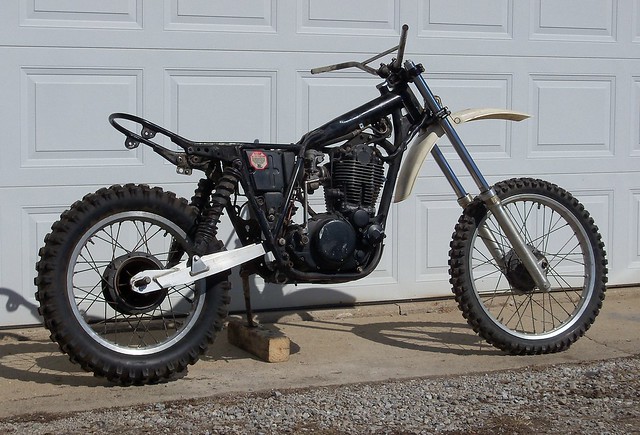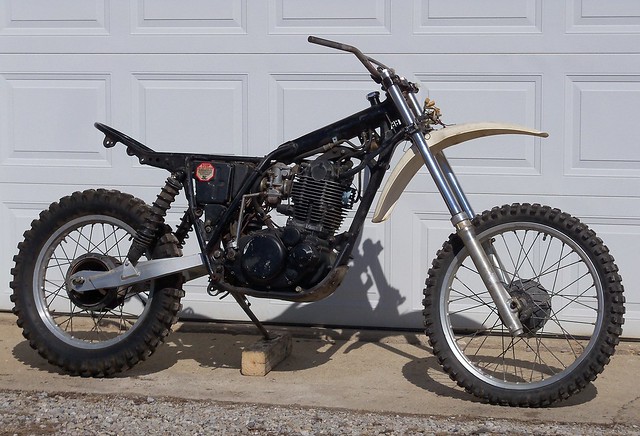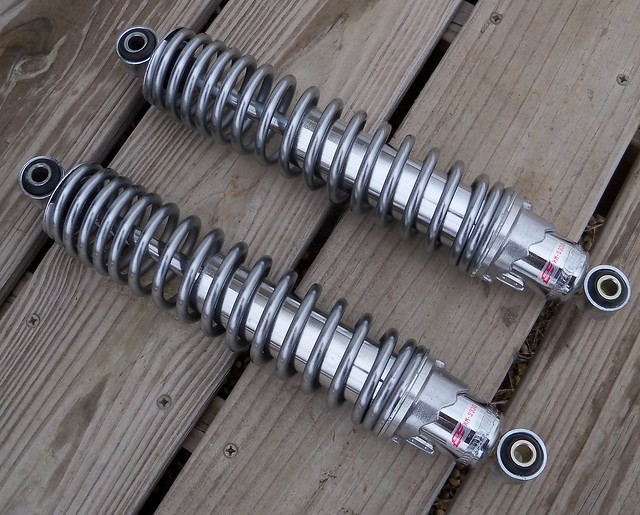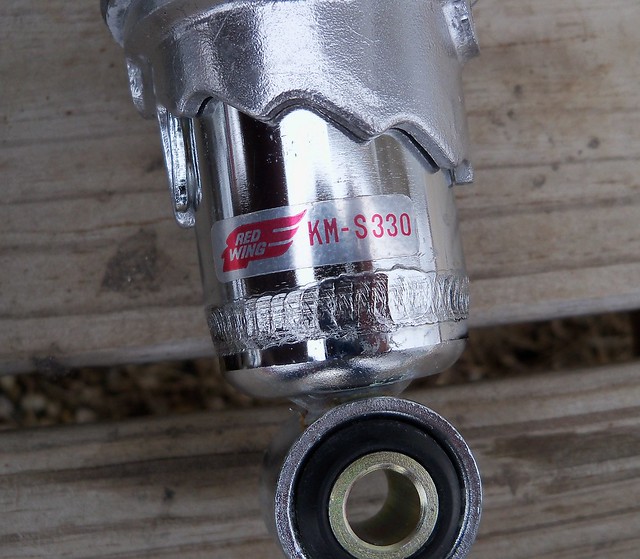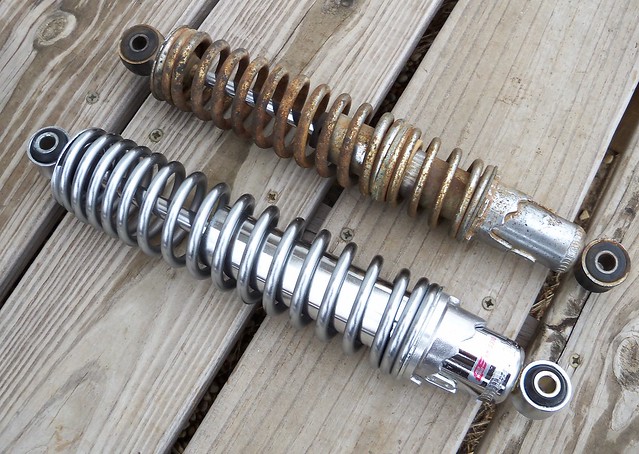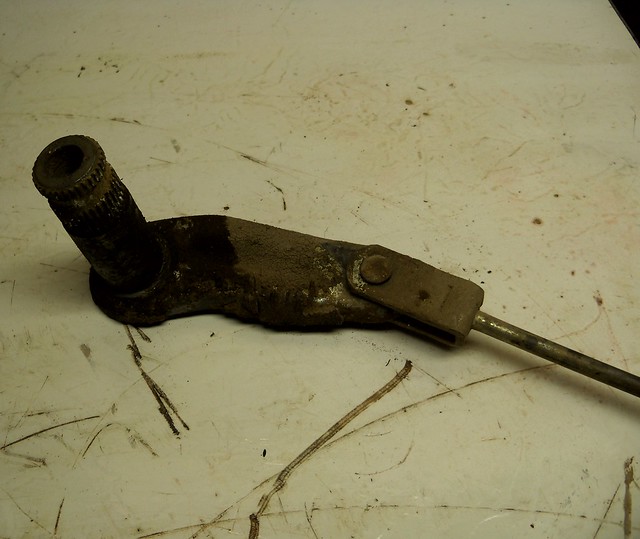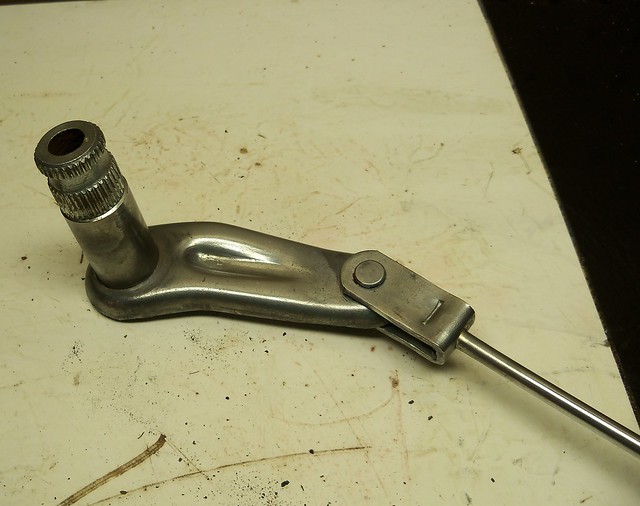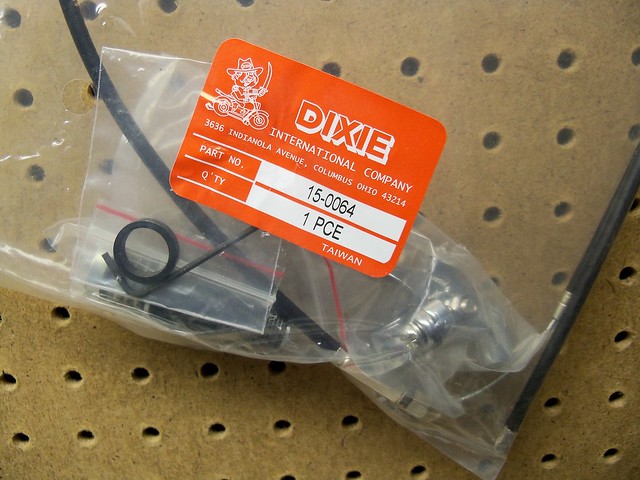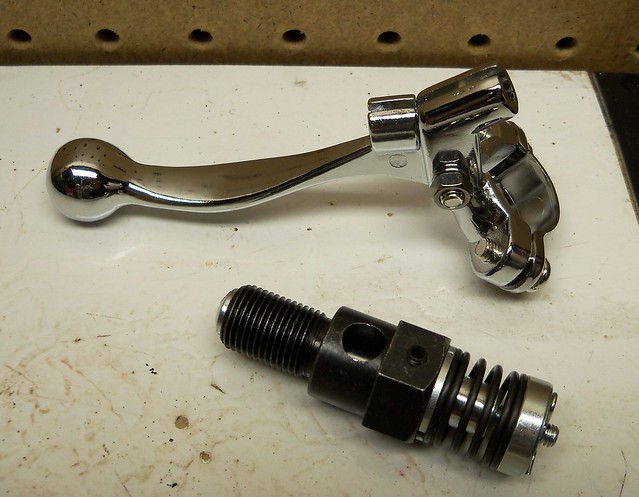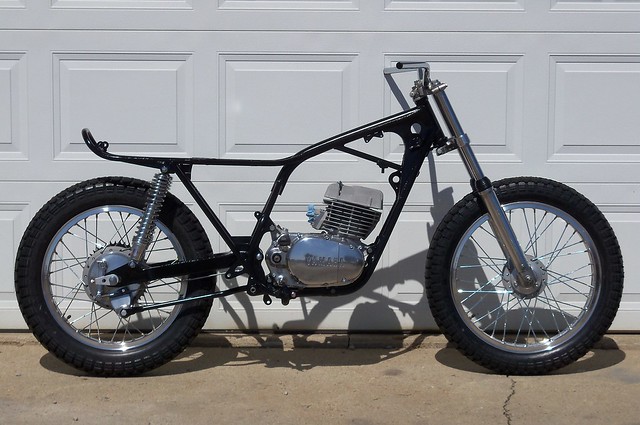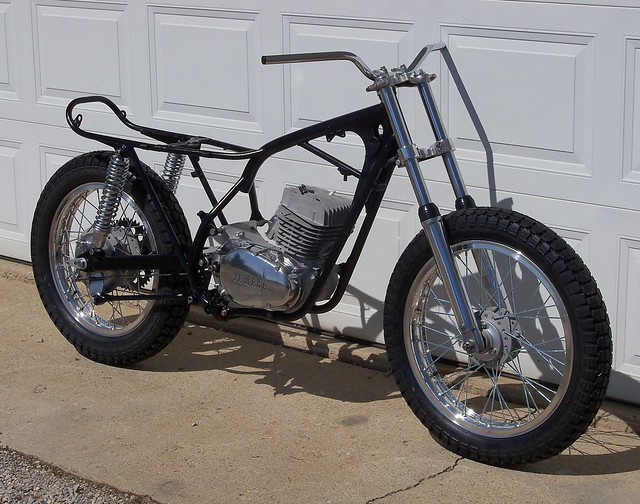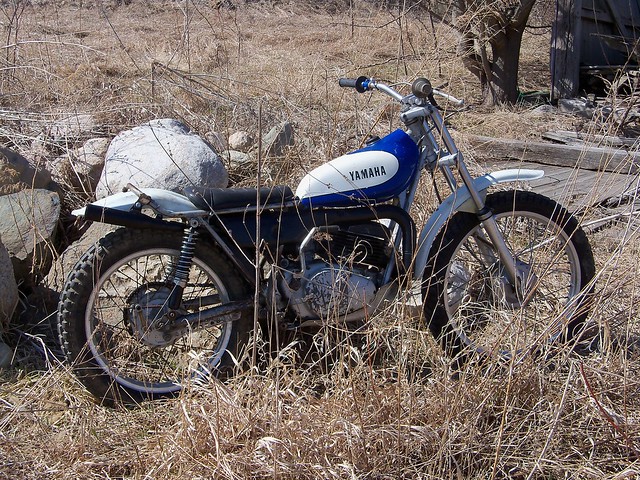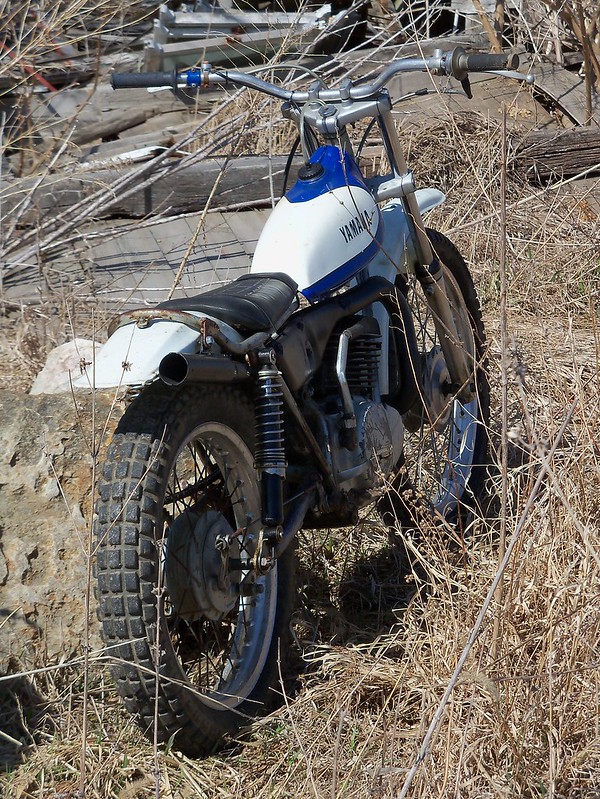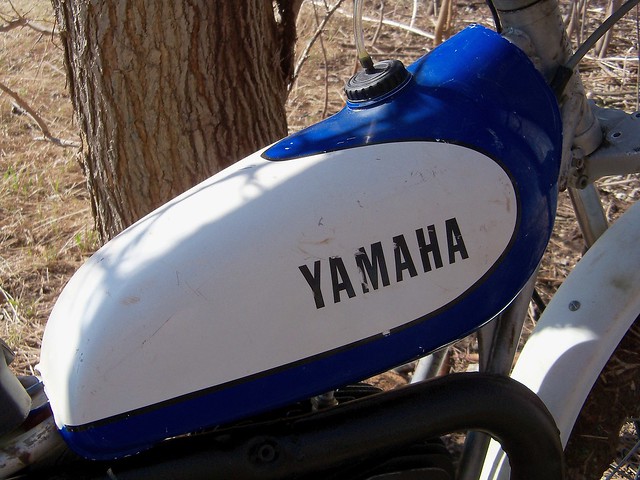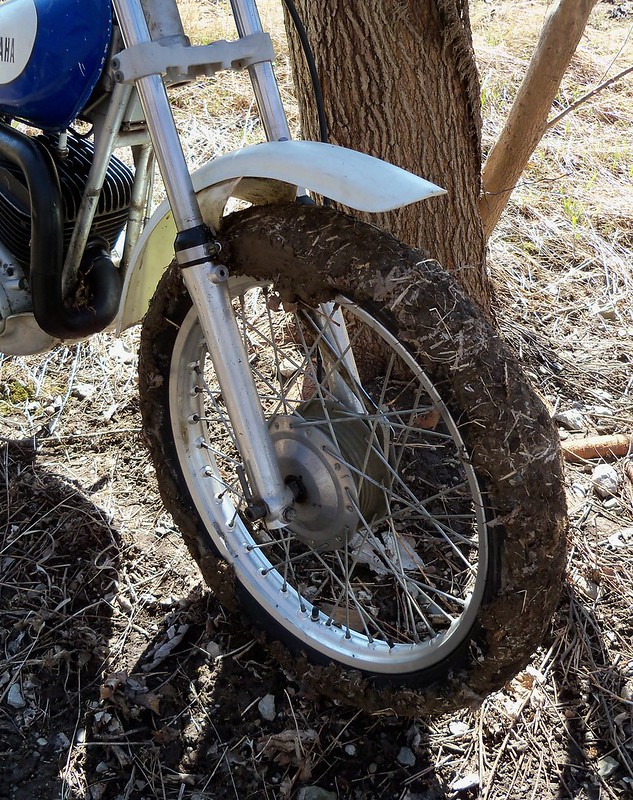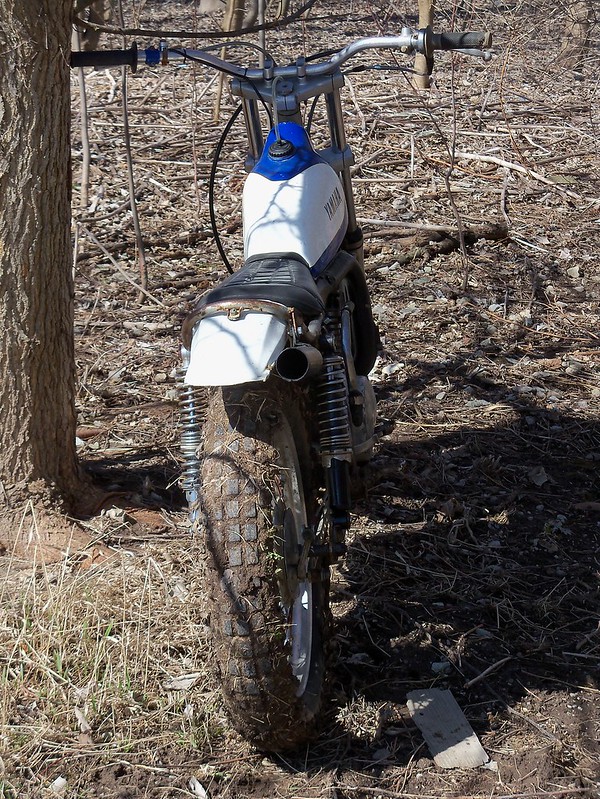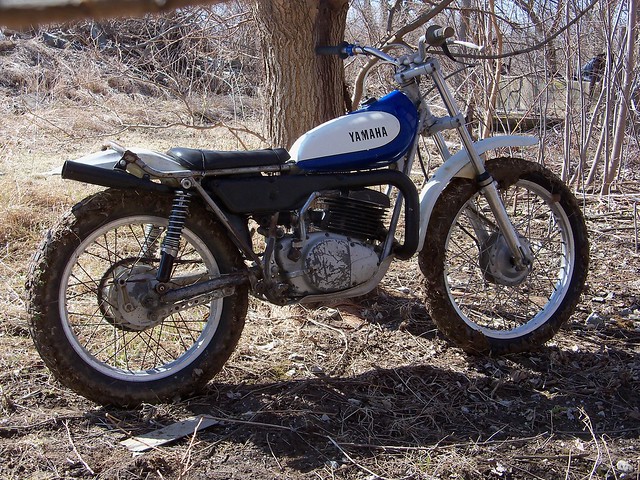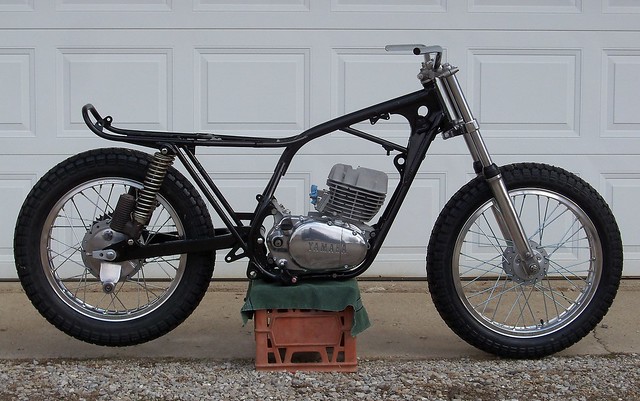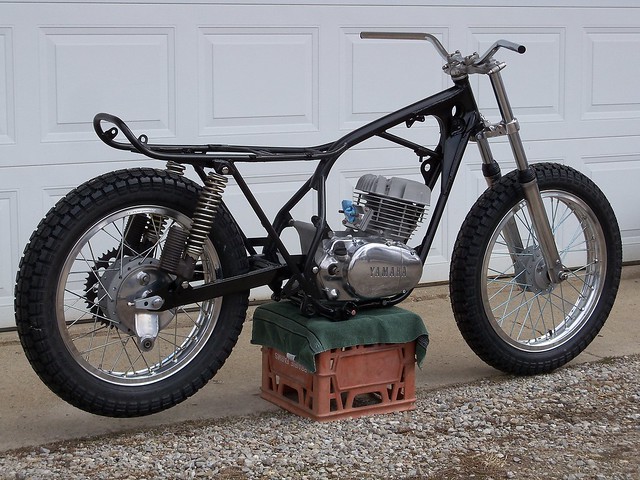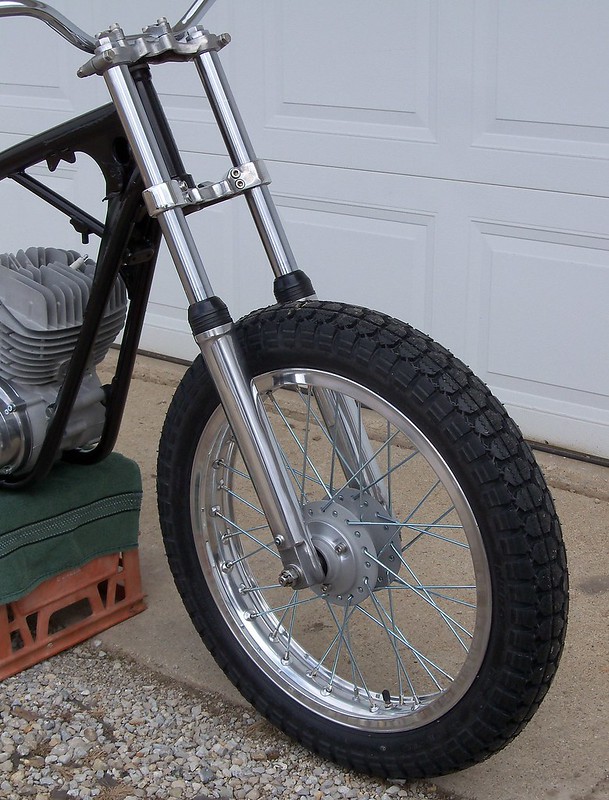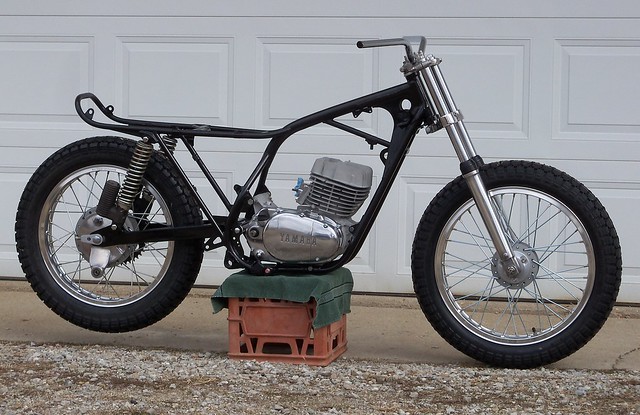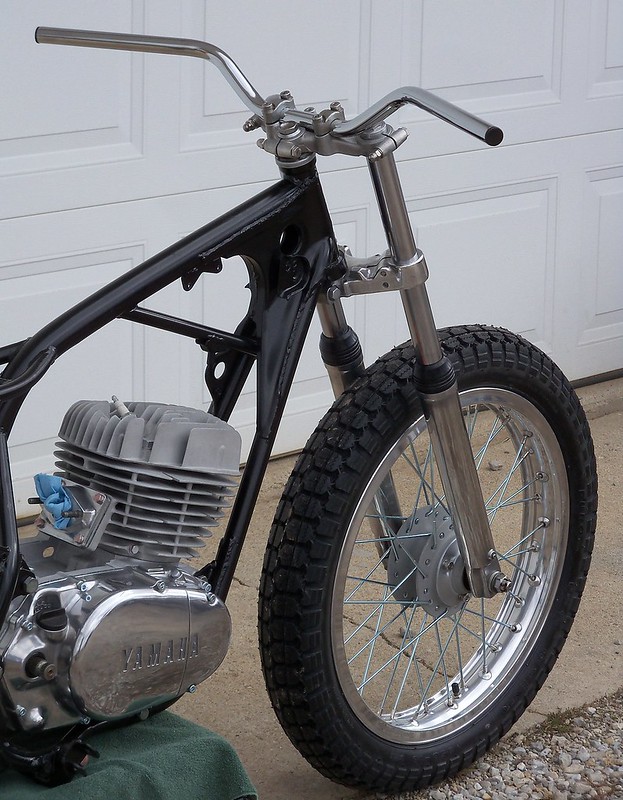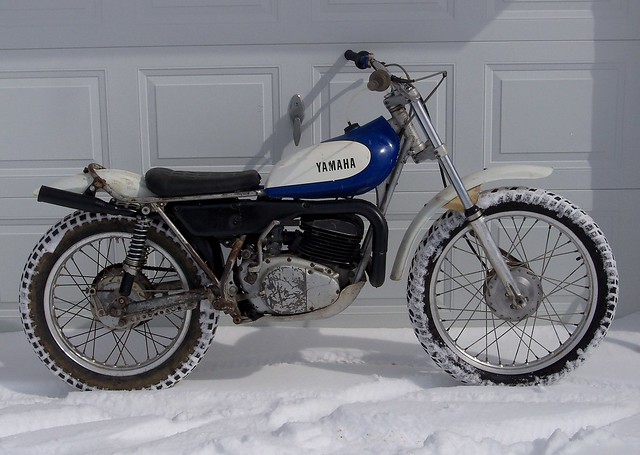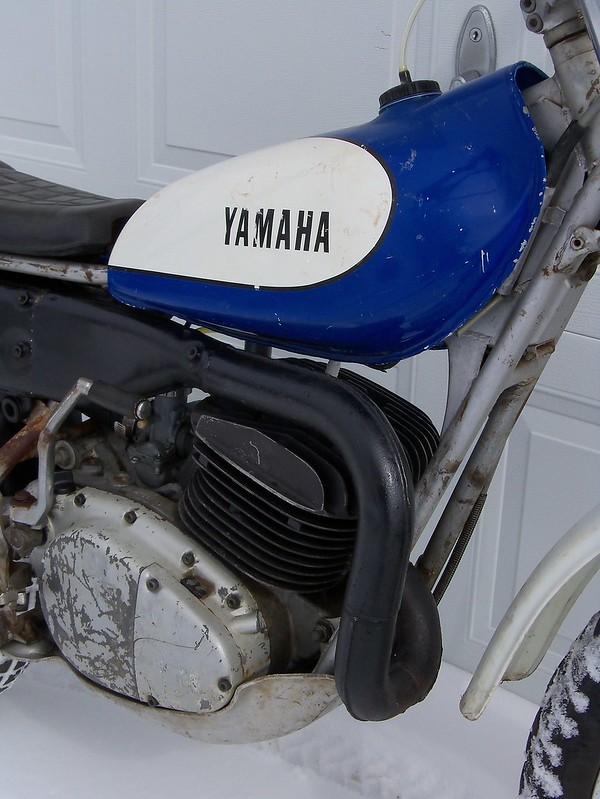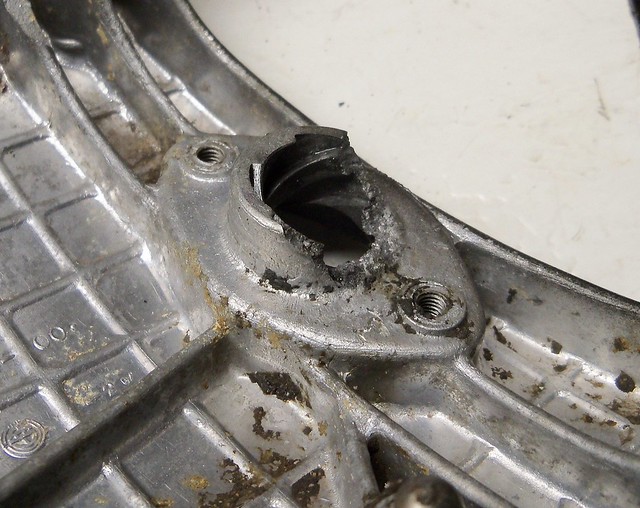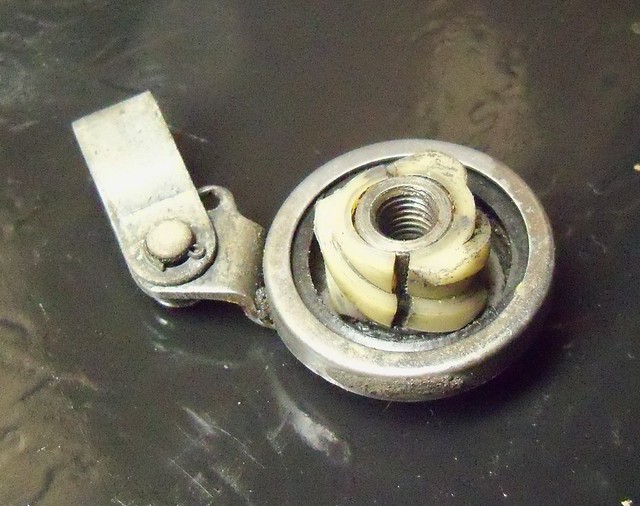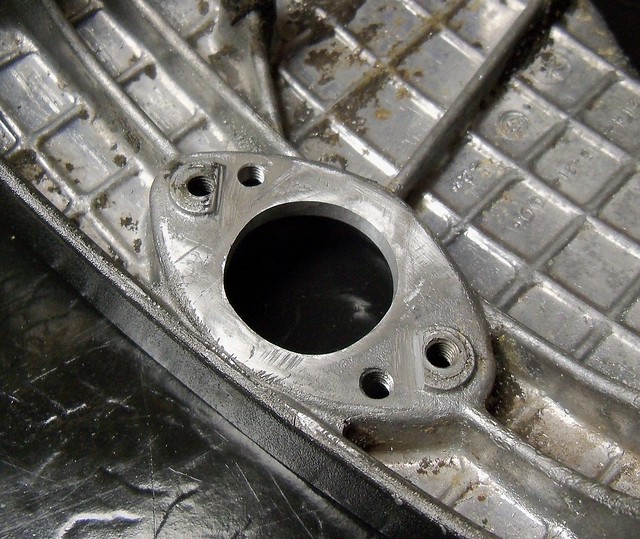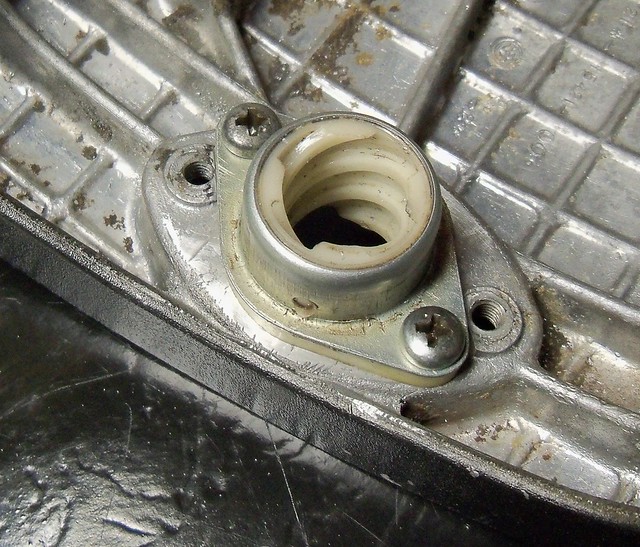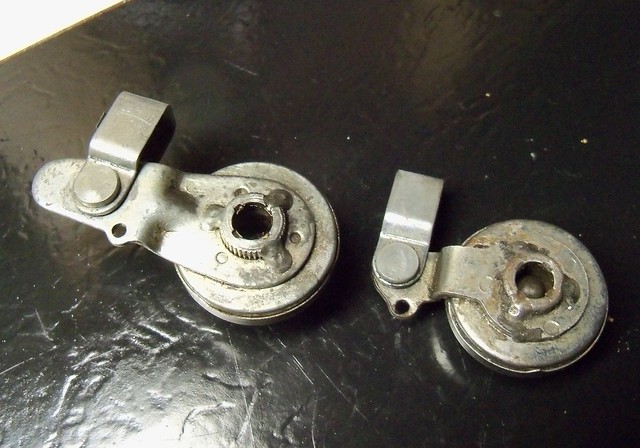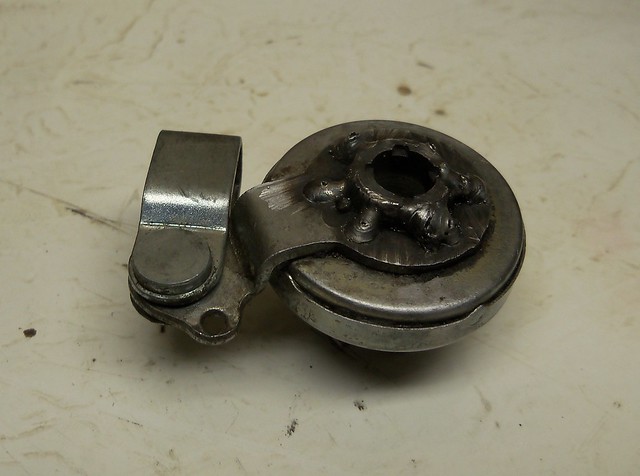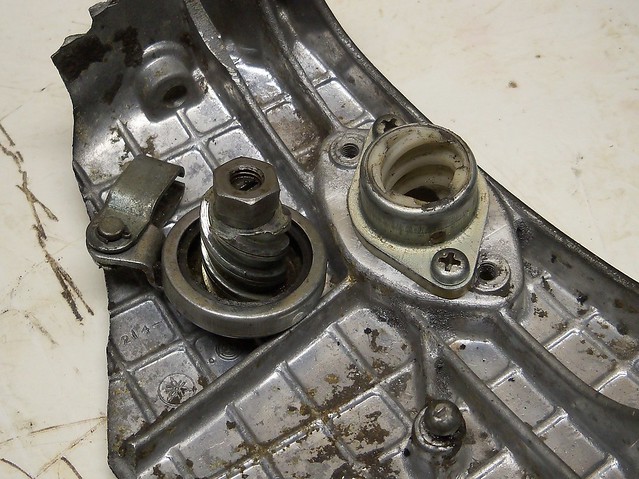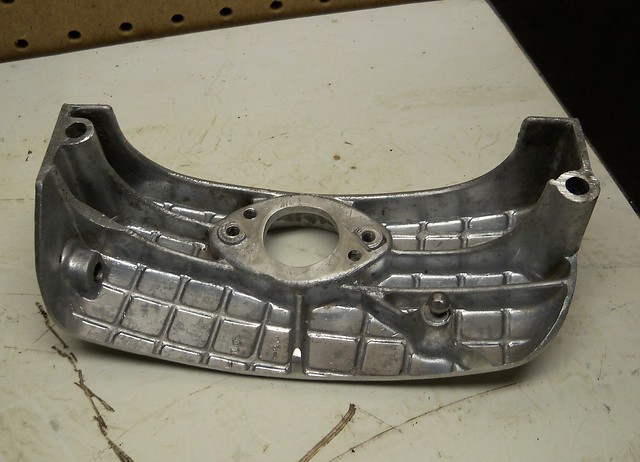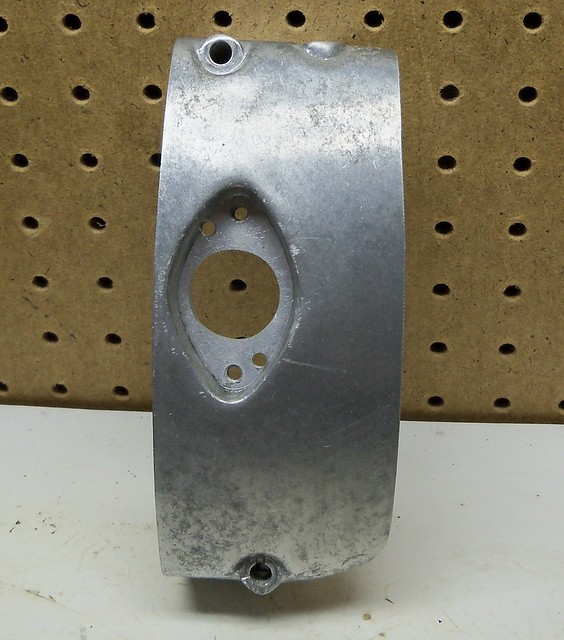I'm just starting on this project, but already have made a change. A 1980 Suzuki PE250 aluminum swingarm will be used instead of the 1977 RM250 steel part. It was $50 'buy it now' with free shipping on ebay, so too good of a deal to pass up. This one isn't cracked at the pivot like many of them are, and came with the chain guides.
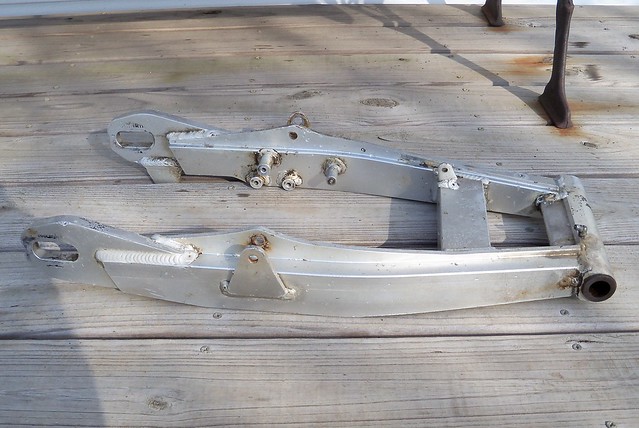
The PE250 swingarm is wider at the pivot. Where the RM swingarm is narrower than the XT part, the PE swingarm is about the right width, if anything maybe a bit too wide. I believe the '78-'79 PE swingarms are steel, and the '80-'81 are aluminum. The '78-'80 RM swingarms are aluminum.
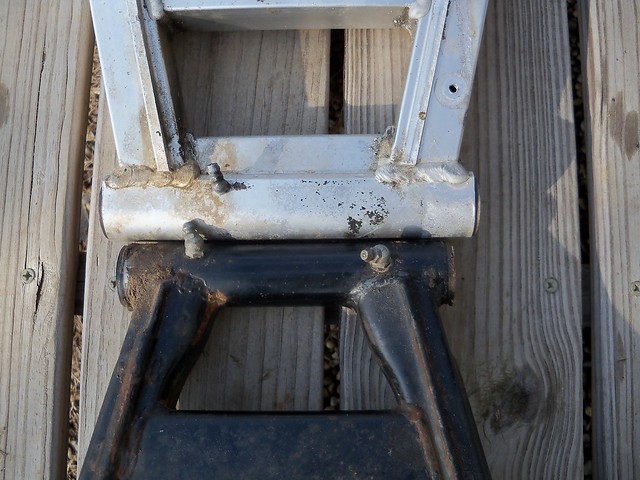
The PE250 swingarm has a 10mm wide bushing and 25mm wide needle bearings. As you can see the needle bearings are shot, which is probably the reason so many of these swingarms are cracked at the pivot. It didn't come with a pivot tube or bolt. Some guys use a reducer to fit the smaller bolt to the XT frame, but I'll adapt the XT pivot tube and bolt to the PE swingarm.
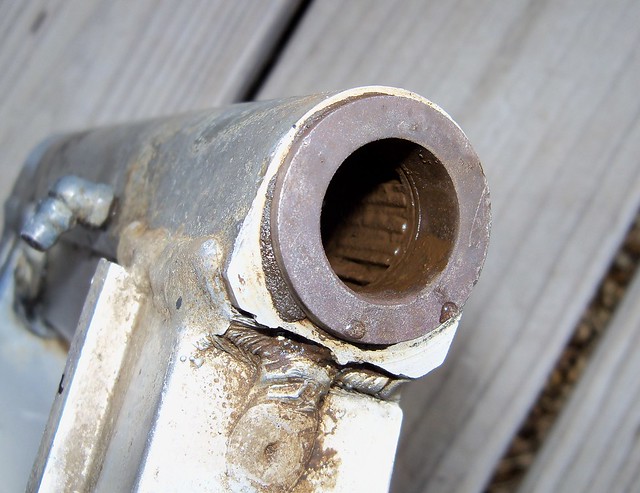
I don't know if it is the best way, but I think the most simple and bomb proof way to fit the XT pivot is to use bronze bushings. I ordered some from
McMaster-Carr. I got two 6659k46 flanged bushings ($4.31 each) and two 6658k51 bushings ($4.38 each). The reason for two per side is that the flanged bushings themselves aren't long enough.
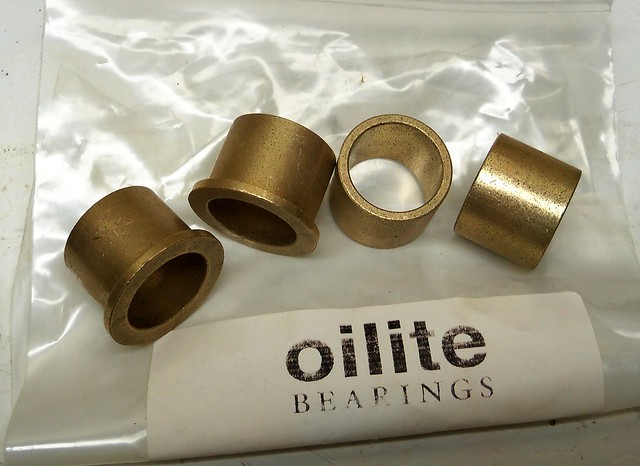
The PE250 swingarm caps are a current Suzuki part and about $5 each.
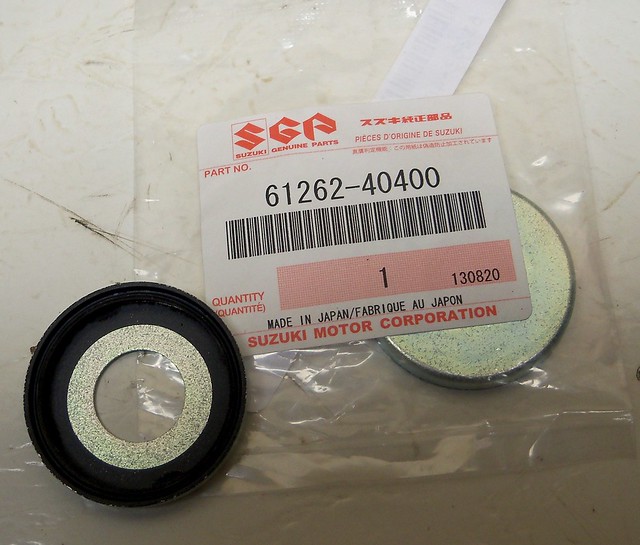
The caps are a good fit on the bushings. I did need to open up the hole on the caps for the larger XT pivot bolt.
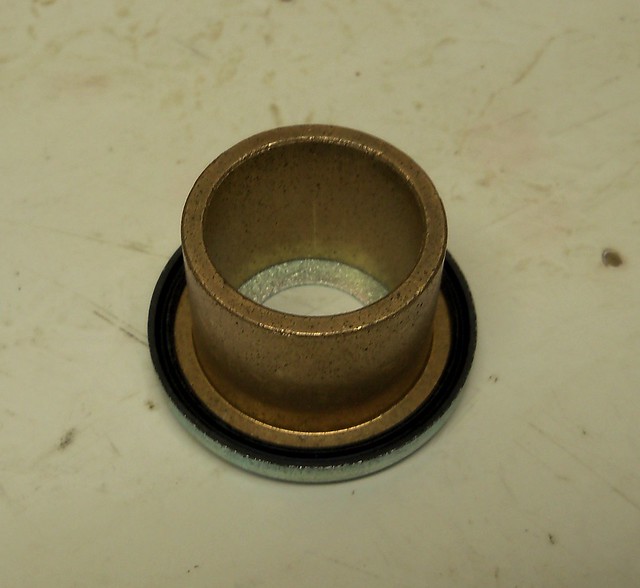
This is the pivot tube from the XT swingarm. The XT pivot tube is 22mm OD, while the PE tube is 20mm OD.
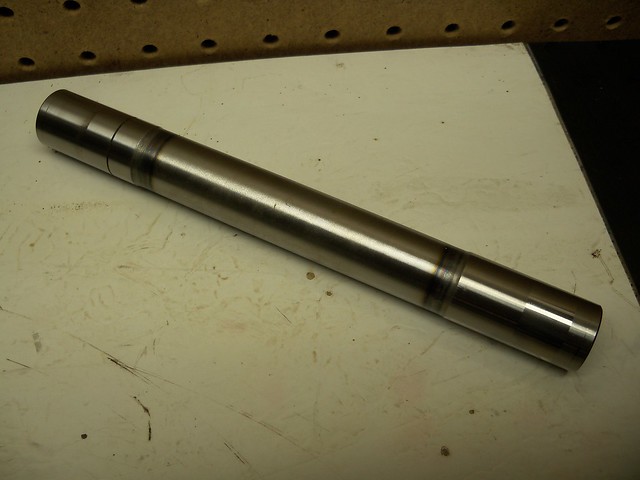
The XT pivot tube is roughly 197mm. The PE swingarm is 194mm wide at the pivot. The flange on the bushings is 2.5mm per side. I needed to trim about 1.5mm per side from the swingarm so the width with the bushings installed would be 196mm. I used masking tape as a guide and trimmed it with a flapper wheel on an angle grinder.
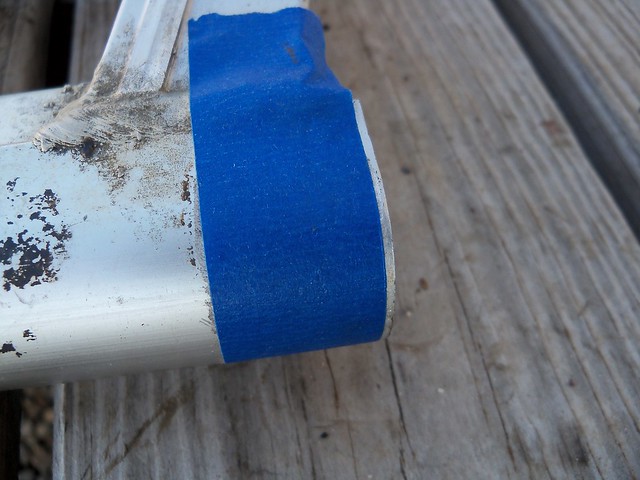
This will let the frame "capture" the pivot tube when the pivot bolt is tightened. There is a little bit of wiggle room to play with here. If the bushings end up a little too wide you can sand or trim them a bit. If the bushings end up too narrow, you can use shims that fit over the pivot tube so you don't have too much side play.
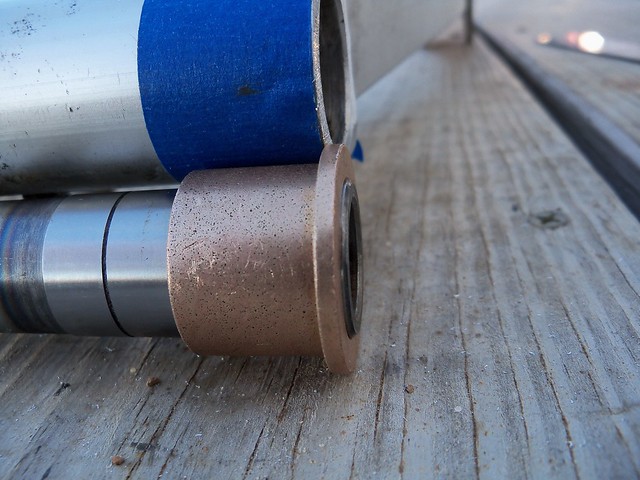
After trimming there was about 38mm of machined area for the bushings.
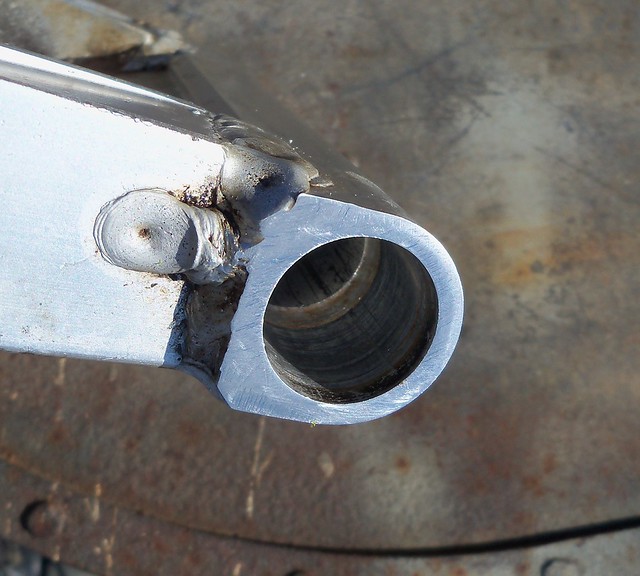
I needed to shorten the bushings so they would fit, one of them cut here.

Here are the bushings ready to press in. After pressing them in I needed to use a brake hone on them so the pivot tube would go in smoothly. The Suzuki end caps were a bit thinner than the XT caps, so I used thin washers under them to fit against the tube (not over it), to get the final width just right.
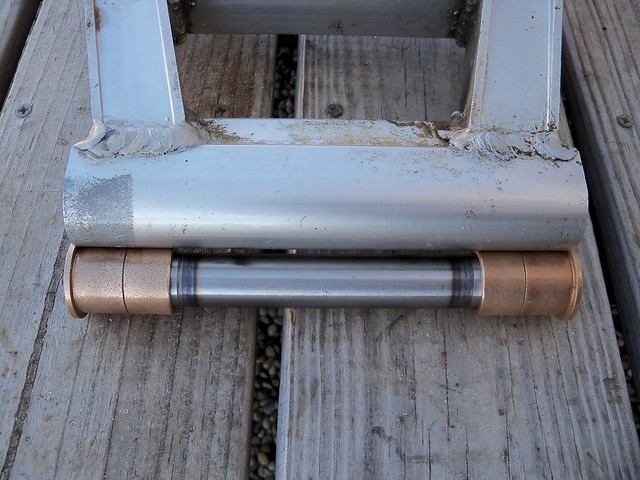
And it's on the bike. I used a '81 IT465 (or thereabouts) 38mm front end to make it a rolling mock-up, but I might end up using a '82 and up 43mm set of forks on it. Something I really don't
want to do, but need to consider is de-raking the frame. Yamaha put about 5 degrees too much rake in these bike. I'll be using a TT500 rear wheel, so next up on this project will be fitting it to the swingarm.
